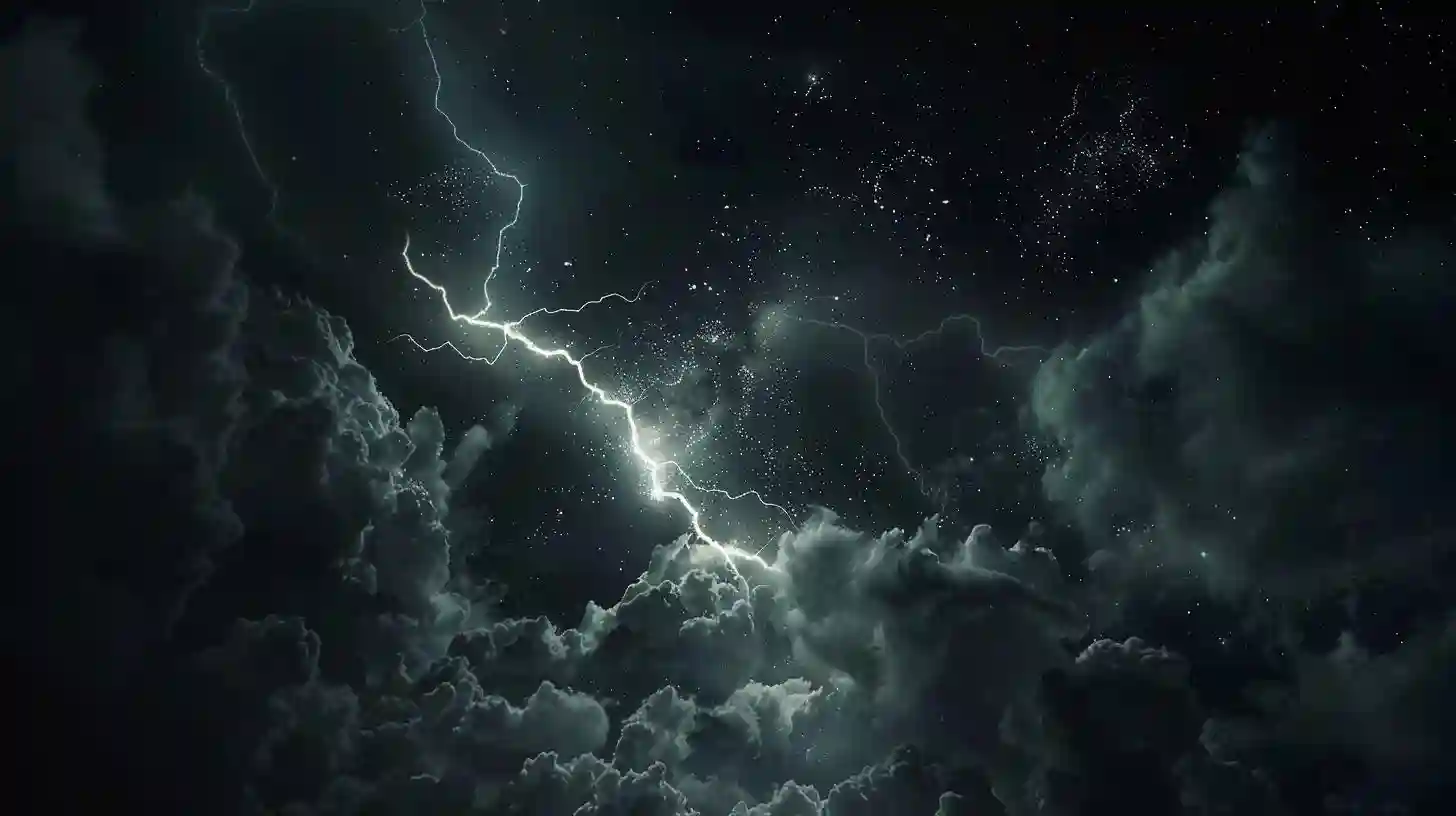
One of the most awe-inspiring yet ordinary natural phenomena is the occurrence of lightning followed by thunder during a storm. The visual spectacle of a sudden flash of lightning followed by the earth-shaking rumble of thunder has fascinated humanity for centuries. But have you ever wondered why you see the lightning first and then hear the thunder, despite the fact that they are produced simultaneously in the same event? The answer lies in the fundamental properties of light and sound and how they travel through the atmosphere.
To understand why lightning and thunder appear to occur at slightly different times from our perspective, it's essential to delve into what lightning and thunder are. Lightning is a massive electrical discharge caused by the imbalance between storm clouds and the ground, or within the clouds themselves. This sudden discharge creates an extremely bright flash as electrons move at incredible speeds through the air, ionizing it and leading to the production of a plasma channel. The bright light we see is a result of this ionization and the paths these electrons take.
On the other hand, thunder is the sound produced by the rapid expansion and contraction of air due to the extreme heat from the lightning bolt. The air around the lightning channel is heated to temperatures that can soar higher than the surface of the sun. This intense heat causes the air to expand explosively. The resulting shock wave moves outward at the speed of sound, which is the essence of what we hear as thunder.
The key to why we perceive these events separately lies in the difference between the speed of light and the speed of sound. Light travels significantly faster than sound. In a vacuum, light travels extraordinarily fast and will usually hit your eyes almost instantaneously, even over vast distances. However, sound travels through a medium—typically air—and its speed is much slower compared to light. Therefore, even though the lightning and thunder occur together, the light reaches you first while the sound takes more time to travel to your ears.
The speed of light is incredibly fast and in practical terms, it can be deemed instantaneous for most earthly distances. When lightning strikes, the light from the flash travels through the atmosphere to our eyes almost immediately. The immense speed of light means we can observe the flash from miles away almost the exact moment it occurs.
On the contrary, the speed of sound is much slower and is dependent on several factors such as temperature, humidity, and the medium through which it travels. Under normal conditions on Earth, sound travels at a pace that means it takes seconds to cover the same distance that light covers in a fraction of a second. Thus, after you see the lightning flash, a delay occurs before you hear the thunder. This delay can provide practical information as well; you can estimate the distance of the storm from your location. When you see the lightning and then count the seconds until you hear the thunder, this time difference can give you a rough approximation of the storm's distance based on the known speed of sound in air.
The varying speeds of light and sound explain why even though lightning and thunder originate simultaneously, they are perceived at different times. This effect is more pronounced the farther the observer is from the source of the lightning. When one is very close to the strike, the delay might be so short that lightning and thunder seem almost simultaneous.
If you are farther away, the time delay can increase, making the thunder follow the lightning by several seconds. This can be a useful tool in estimating the distance of an ongoing storm. For example, if you see a flash of lightning and count several seconds before hearing the thunder, you can roughly gauge how many miles away the storm is, providing valuable information about whether the storm is approaching or moving away from you.
The dramatic difference in the speeds of light and sound and the observable delay between lightning and thunder also underscore some interesting aspects of wave behavior and atmospheric conditions. Light being an electromagnetic wave does not require a medium to travel. It can move through the vacuum of space, allowing it to cover vast distances across the universe almost unimpeded. Sound, being a mechanical wave, requires a medium like air, water, or solid materials to travel. This requirement significantly limits its speed and distance, subjecting it to attenuation and distortion based on the medium's properties.
Furthermore, the speed of sound can vary with atmospheric conditions. Higher temperatures can make sound travel faster, while higher humidity has a similar effect. These factors add layers of complexity to the travel of sound, making the delay between the visual and auditory components of a lightning strike somewhat variable depending on real-time weather conditions.
The phenomenon of perceiving lightning and thunder at different times also resonates with historical and cultural mythologies. Ancient civilizations often attributed these natural events to the workings of gods or supernatural forces. The Greeks, for instance, believed that Zeus was hurling lightning bolts from the sky, while the Norse associated thunder with the god Thor swinging his mighty hammer. Though these mythological explanations have been replaced by scientific understanding, the wonder and reverence for this natural spectacle persist to this day.
The modern understanding rooted in physics not only satisfies scientific curiosity but also enhances human appreciation for the intricate dynamics of nature. It shows how something as commonplace as a thunderstorm is a complex interplay of natural forces operating at scales and speeds that bewilder the human senses. Through understanding the science behind why you see lightning before you hear thunder, deeper insights are fostered into the invisible mechanics orchestrating everyday phenomena – showing how even the most familiar natural scenes hold layers of scientific wonder waiting to be discovered and appreciated.